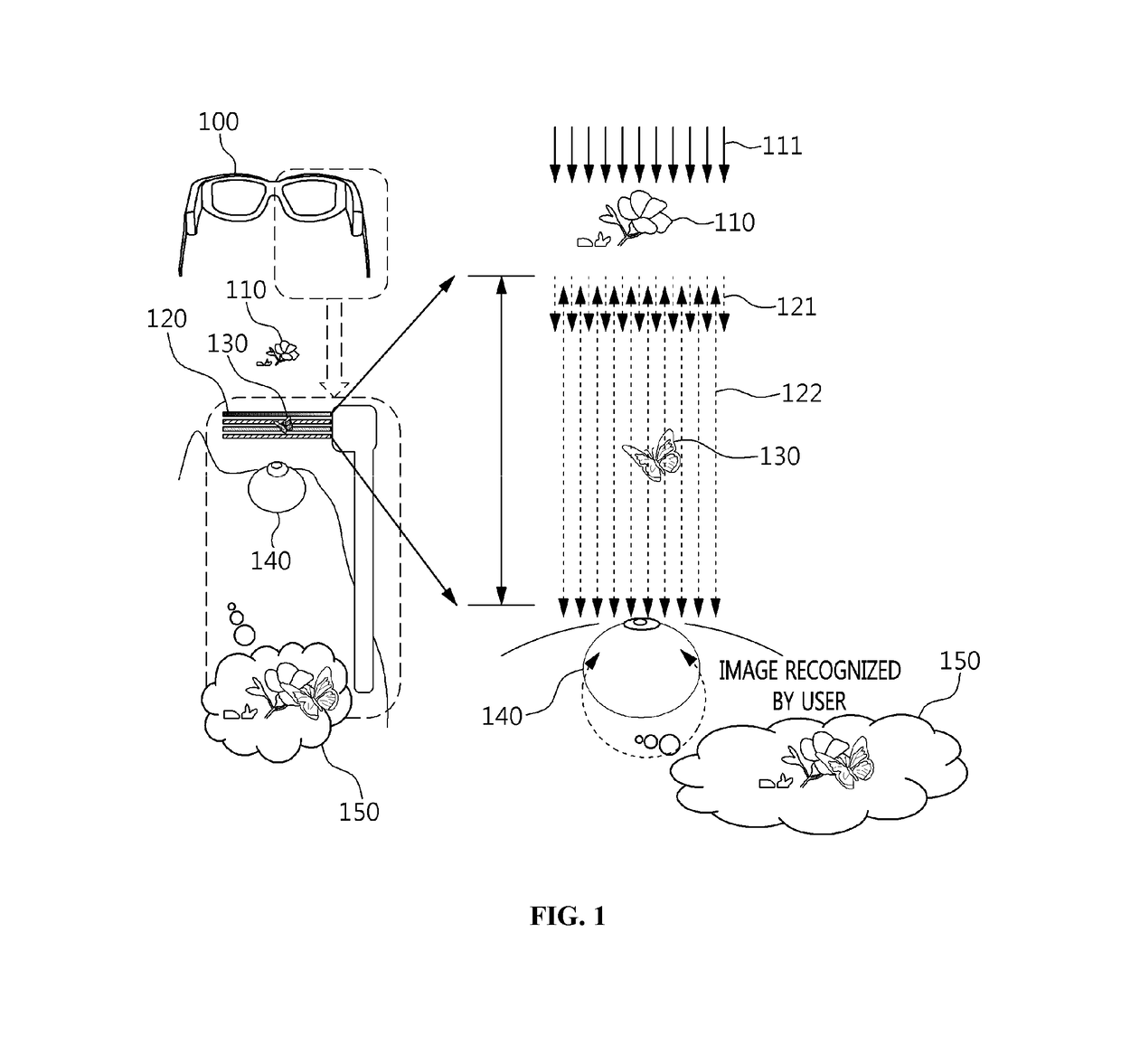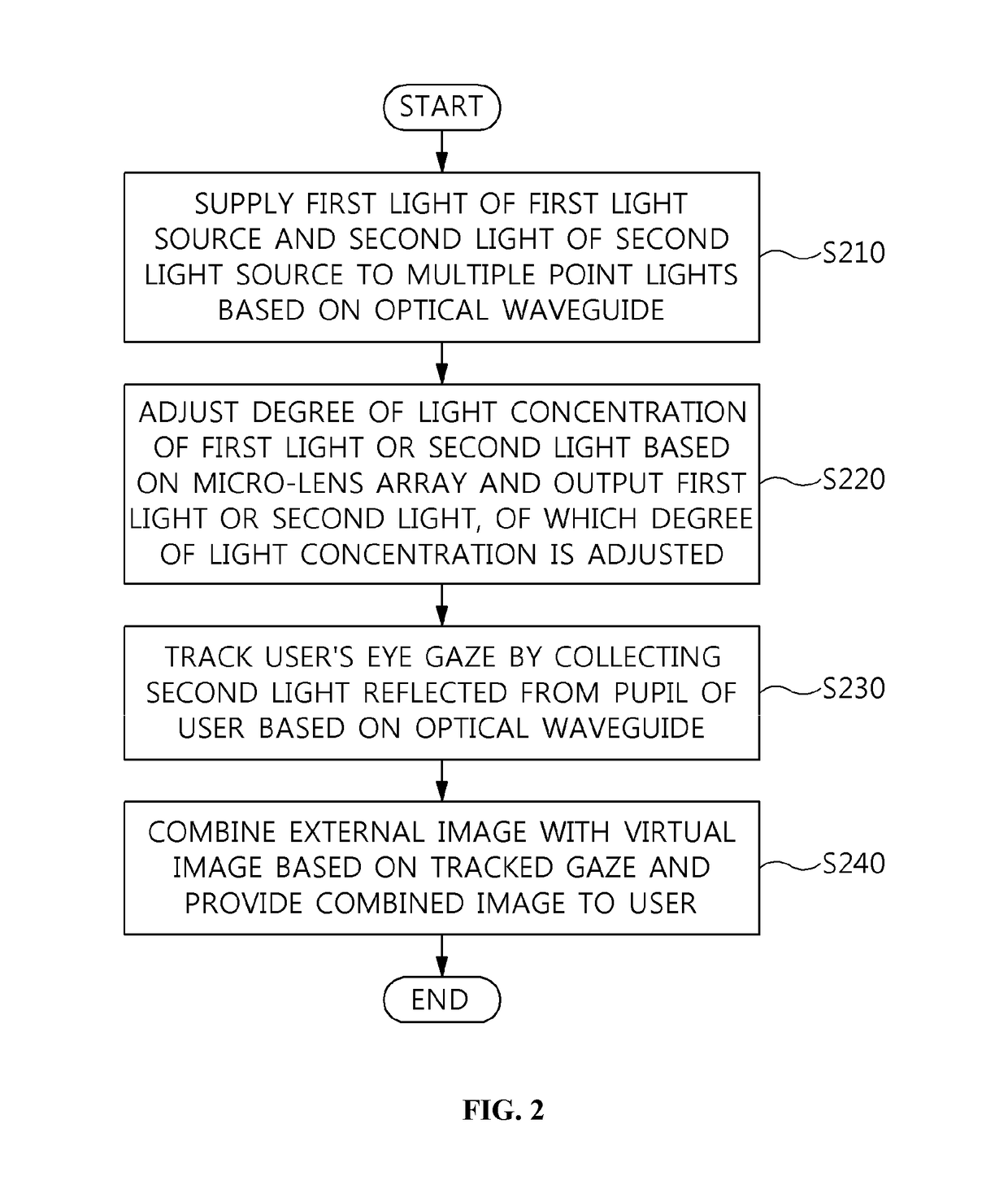Method for providing composite image based on optical transparency and apparatus using the same
a technology of optical transparency and composite images, applied in the field of providing composite images based on optical transparency, can solve the problems of low quality of provided images, inability to realize optical see-through capability of conventional methods for implementing 3d stereoscopic images, and insufficient use of existing methods for implementing light eyeglasses in commercial products for customers
- Summary
- Abstract
- Description
- Claims
- Application Information
AI Technical Summary
Benefits of technology
Problems solved by technology
Method used
Image
Examples
Embodiment Construction
[0048]The present invention will be described in detail below with reference to the accompanying drawings. Repeated descriptions and descriptions of known functions and configurations which have been deemed to make the gist of the present invention unnecessarily obscure will be omitted below. The embodiments of the present invention are intended to fully describe the present invention to a person having ordinary knowledge in the art to which the present invention pertains. Accordingly, the shapes, sizes, etc. of components in the drawings may be exaggerated in order to make the description clearer.
[0049]Hereinafter, a preferred embodiment of the present invention will be described in detail with reference to the accompanying drawings.
[0050]FIG. 1 is a view that shows the process of providing a composite image using a wearable display based on optical transparency according to an embodiment of the present invention.
[0051]Referring to FIG. 1, a wearable display 100 based on optical tr...
PUM
 Login to View More
Login to View More Abstract
Description
Claims
Application Information
 Login to View More
Login to View More - R&D
- Intellectual Property
- Life Sciences
- Materials
- Tech Scout
- Unparalleled Data Quality
- Higher Quality Content
- 60% Fewer Hallucinations
Browse by: Latest US Patents, China's latest patents, Technical Efficacy Thesaurus, Application Domain, Technology Topic, Popular Technical Reports.
© 2025 PatSnap. All rights reserved.Legal|Privacy policy|Modern Slavery Act Transparency Statement|Sitemap|About US| Contact US: help@patsnap.com



